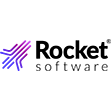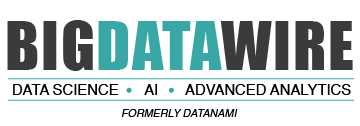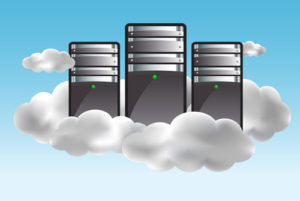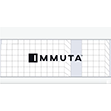
The New Economics of the Separation of Compute and Storage

via Shutterstock
No one can predict the future analytical needs of their business. The right storage needs today might not be the right storage needs next year, or even next week. An organization’s workload requirements might grow five-fold by next year, or next quarter, or next month. With exploding data volumes, organizations are making significant investments in HDFS or S3 data lake infrastructure for storing “cold” data more cost-effectively. Given these volatile and rapidly changing scenarios, how do organizations ensure they can handle dynamic workloads and evolving data analytics requirements, as well as safe-guard their data lake investments?
Moving data in and out of various data stores is time consuming. Provisioning storage and compute resources for worst-case scenarios is costly. To avoid these hassles, organizations should ensure that their analytical platform provide freedom from underlying infrastructure, maximize investments in data lakes, and support their pursuit of cloud economics as well as on premise and hybrid deployments, while unifying the analytics that support them all.
Optimizing analytics for the cloud involves placing data on reliable and durable shared storage, separating storage from compute (along with the right amount of local cache), and matching the performance requirements of existing workloads. This allows organizations to tie data platform costs directly to business needs by provisioning just the right amount of compute resources for queries and just the right amount of storage resources for data. The ability to scale up and down the cluster elastically to accommodate analytic workload peaks and troughs results in lowered infrastructure cost and maximum business value. When separation of compute and storage is architected with cloud economics in mind, it results in greater operational simplicity and workload isolation to meet SLA and business stakeholder objectives – a win-win for any IT organization.
Separation of Compute and Storage in Action
Cloud economics and the separation of compute and storage bring even greater flexibility and financial viability to organizations looking to capitalize on the promise of big data and advanced analytics. Advanced analytics is changing the way companies across every industry operate, grow, and stay competitive. Let’s look at a few use cases that can benefit from this architecture.
Consider a medical equipment manufacturer that is going to market with a smart medical device embedded with more sensors than ever before. Before formally launching, they need to run a trial at their key customer accounts. By separating compute and storage, the manufacturer can optimize its resources to analyze the early-release testing data so that they benefit from maximum reliability upon the mass release.
Retailers who separate compute and storage can also strengthen their abilities to analyze seasonal sales patterns. Though analytic workloads in retail settings vary based on volume, they still require maximum dashboard performance – regardless of the number of concurrent users – so that key members can gain access to important sales metrics.
Engagement analysis can be streamlined with the separation of compute and storage, too. For instance, think of a gaming company that is about to introduce a brand-new game. Prior to launch, they must increase their analytical capacity so that they can evaluate success based on customer insights. This architecture would enable them to deliver real-time analytics during critical stages of the product launch, such as a special event or tournament, so that they can swiftly make modifications that better appeal to their community.
Understanding the Financial Benefit
These real-world examples can really be applied to any organization that relies on analytics. To truly grasp the immense cost savings by leveraging the separation of compute and storage capabilities, let’s elaborate on the retail use case.
Retailers struggle to accommodate the busiest shopping season of the year in the U.S., which begins late on Thanksgiving Thursday, continues through Black Friday and into the weekend, and concludes on Cyber Monday. The retailer must increase their compute capacity just for this seasonal peak – maybe a partial peak after Cyber Monday until about ten days after New Years once the returns are all in. For the rest of the year, the retailer is operating within a nominal compute capacity. Let’s break it down:
Assuming that the retailer needs:
- 20-node cluster for the Thanksgiving weekend and Cyber Monday
- 12-node cluster until after New Year, and
- Six nodes for the other months of the year

Scaling capacity to workload (figure) offers significant cost savings. A traditional solution (provisioned for peak workload year-round) vs. separating compute and storage will deliver savings of approximately 66 percent just in compute costs.
Perhaps the workload is uniform, just periodic. For short-term projects, separating compute and storage enables “Hibernating.” Hibernating lets you shut down all compute nodes until you need them again. Come out of hibernation when your project starts up again by simply creating a new cluster and reviving your database.
Lastly, most organizations have use cases requiring consistent compute requirements, as well as use cases that have variable compute need. Businesses need to support the right use cases today, knowing with certainty that they may change in the future. To achieve that end, seek options to buy compute power only when needed and reduce storage costs based on use case requirements. But, deployments in the cloud are always likely part of a larger, more hybrid strategy that needs to be kept in mind.
Next Steps
With so many existing as well as emerging SQL and NoSQL databases, query engines, and data warehouses options coming to market, businesses are feeling the pressure to understand how their data analytics platform can maximize cloud economics, while, naturally, deriving timely insights. This is even more important as the key attributes driving cloud adoption are operational simplicity, just-in-time deployments, and elastic scaling of resources. The separation of compute from storage provide maximum flexibility and enables organizations to minimize resource burden and maximize business value.
As cloud vendors continue to lower the price of storage and compute services, organizations have even more incentive to move their data to the cloud, especially for variable workloads and use cases that require heavy compute for finite periods of time. This is particularly attractive for New Economy businesses that have not yet earmarked the capital outlays and built out data centers to handle peak compute and storage needs – however rare or infrequent these peaks happen. In contrast, cloud economics enable organizations to pay for only what they need, when they need it. If this scenario sounds familiar, then the question that your organization should ask itself is: “How do I take advantage of cloud economics without being penalized for fluctuating requirements and dynamic workloads?”
 About the author: Jeff Healey is the Senior Director of Vertica Product Marketing at Micro Focus. Jeff leads the product marketing team and digital property for the Vertica Advanced Analytics Platform. With more than 20 years of high-tech marketing experience and deep knowledge in messaging, positioning, and content development, Jeff has previously led product marketing for Axeda Corporation (now PTC). Prior to Axeda, Jeff held product marketing, customer success, and lead editorial roles at MathWorks, Macromedia (now Adobe), Sybase (now SAP), and The Boston Globe.
About the author: Jeff Healey is the Senior Director of Vertica Product Marketing at Micro Focus. Jeff leads the product marketing team and digital property for the Vertica Advanced Analytics Platform. With more than 20 years of high-tech marketing experience and deep knowledge in messaging, positioning, and content development, Jeff has previously led product marketing for Axeda Corporation (now PTC). Prior to Axeda, Jeff held product marketing, customer success, and lead editorial roles at MathWorks, Macromedia (now Adobe), Sybase (now SAP), and The Boston Globe.
Related Items:
How Erasure Coding Changes Hadoop Storage Economics
August 18, 2025
- Oracle Deploys OpenAI GPT-5 Across Database and Cloud Applications Portfolio
- Penn and Ai2 Release 400K Synthetic Images to Advance AI’s Visual Reasoning
- MSU: Decades of Data Point to Widespread Butterfly Loss in Midwest
August 15, 2025
- SETI Institute Awards Davie Postdoctoral Fellowship for AI/ML-Driven Exoplanet Discovery
- Los Alamos Sensor Data Sheds Light on Powerful Lightning Within Clouds
- Anaconda Report Reveals Need for Stronger Governance is Slowing AI Adoption
August 14, 2025
- EDB Accelerates Enterprise AI Adoption with NVIDIA
- Oracle to Offer Google Cloud’s Gemini AI Models Through OCI Generative AI
- Grafana Labs Launches Public Preview of AI Assistant for Observability and Monitoring
- Striim Launches 5.2 with New AI Agents for Real-Time Predictive Analytics and Vector Embedding
- G42 Launches OpenAI GPT-OSS Globally on Core42’s AI Cloud
- SuperOps Launches Agentic AI Marketplace Partnering with AWS
- MinIO Launches MinIO Academy as AI Adoption Drives Demand for Object Storage Expertise
- DataBank Reports 60% of Enterprises Already Seeing AI ROI or Expect to Within 12 Months
- SnapLogic Surpasses $100M ARR as Founder Gaurav Dhillon Retires
August 13, 2025
- KIOXIA Advances AI Server Infrastructure Scalability, Accelerating Storage Performance and Density
- Qubrid AI Debuts 2-Step No-Code Platform to Chat Directly with Proprietary Data
- Redpanda Provides Kafka-Compatible Streaming for NYSE Cloud Services
- Treasure Data Introduces ‘No Compute’ Pricing, Delivering Predictable Economics with Hybrid CDP Architecture
- Couchbase: New Enterprise Analytics Brings Next-Gen JSON Analytics to Self-Managed Deployments
- Top 10 Big Data Technologies to Watch in the Second Half of 2025
- Rethinking Risk: The Role of Selective Retrieval in Data Lake Strategies
- LinkedIn Introduces Northguard, Its Replacement for Kafka
- Apache Sedona: Putting the ‘Where’ In Big Data
- What Are Reasoning Models and Why You Should Care
- Scaling the Knowledge Graph Behind Wikipedia
- Why Metadata Is the New Interface Between IT and AI
- Why OpenAI’s New Open Weight Models Are a Big Deal
- LakeFS Nabs $20M to Build ‘Git for Big Data’
- Doing More With Your Existing Kafka
- More Features…
- Mathematica Helps Crack Zodiac Killer’s Code
- Promethium Wants to Make Self Service Data Work at AI Scale
- BigDATAwire Exclusive Interview: DataPelago CEO on Launching the Spark Accelerator
- The Top Five Data Labeling Firms According to Everest Group
- McKinsey Dishes the Goods on Latest Tech Trends
- Supabase’s $200M Raise Signals Big Ambitions
- Solidigm Celebrates World’s Largest SSD with ‘122 Day’
- AI Skills Are in High Demand, But AI Education Is Not Keeping Up
- Google Pushes AI Agents Into Everyday Data Tasks
- Collate Focuses on Metadata Readiness with $10M Series A Funding
- More News In Brief…
- Seagate Unveils IronWolf Pro 24TB Hard Drive for SMBs and Enterprises
- OpenText Launches Cloud Editions 25.3 with AI, Cloud, and Cybersecurity Enhancements
- Gartner Predicts 40% of Generative AI Solutions Will Be Multimodal By 2027
- StarTree Adds Real-Time Iceberg Support for AI and Customer Apps
- Gathr.ai Unveils Data Warehouse Intelligence
- Deloitte Survey Finds AI Use and Tech Investments Top Priorities for Private Companies in 2024
- LF AI & Data Foundation Hosts Vortex Project to Power High Performance Data Access for AI and Analytics
- Dell Unveils Updates to Dell AI Data Platform
- Zscaler Unveils Business Insights with Advanced Analytics for Smarter SaaS Spend and Resource Allocation
- Collibra Acquires Deasy Labs to Extend Unified Governance Platform to Unstructured Data
- More This Just In…




























